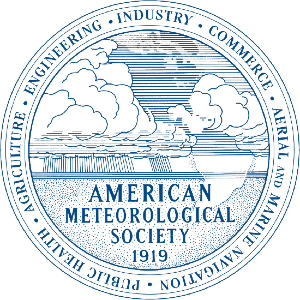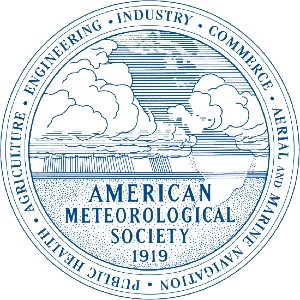
AMS Climate Change Video - Environmental Science Seminar Series (ESSS)
American Meteorological Society ESSS
All episodes
Best episodes
Top 10 AMS Climate Change Video - Environmental Science Seminar Series (ESSS) Episodes
Goodpods has curated a list of the 10 best AMS Climate Change Video - Environmental Science Seminar Series (ESSS) episodes, ranked by the number of listens and likes each episode have garnered from our listeners. If you are listening to AMS Climate Change Video - Environmental Science Seminar Series (ESSS) for the first time, there's no better place to start than with one of these standout episodes. If you are a fan of the show, vote for your favorite AMS Climate Change Video - Environmental Science Seminar Series (ESSS) episode by adding your comments to the episode page.

Assessing Greenhouse Gas Emissions Reduction Policies: New Science Tools in the Service of Policy and Negotiations
AMS Climate Change Video - Environmental Science Seminar Series (ESSS)
04/16/09 • 94 min

Two Engineering Measures to Reduce Global Warming: Injecting Particles into the Atmosphere and "Clean" Coal
AMS Climate Change Video - Environmental Science Seminar Series (ESSS)
01/05/09 • 88 min

Ecosystem Health in a Climatically-Altered World - Is 'Species Rescue' part of the Prognosis for the Future?
AMS Climate Change Video - Environmental Science Seminar Series (ESSS)
10/21/08 • 77 min

Accelerating Atmospheric CO2 Growth from Economic Activity, Carbon Intensity, and Efficiency of Natural Carbon Sinks
AMS Climate Change Video - Environmental Science Seminar Series (ESSS)
10/01/08 • 113 min

Coping with Climate Change: Gulf Coast Transportation and New York City Waterworks
AMS Climate Change Video - Environmental Science Seminar Series (ESSS)
09/26/08 • 96 min

Keynote Address - AMS workshop on Federal Climate Policy
AMS Climate Change Video - Environmental Science Seminar Series (ESSS)
09/19/08 • 38 min

Public Attitudes, Perceptions, and Concern about Global Warming: Evidence from a New Survey
AMS Climate Change Video - Environmental Science Seminar Series (ESSS)
07/25/08 • 107 min

Solar Radiation, Cosmic Rays and Greenhouse Gases: What's Driving Global Warming? (23 March 2008)
AMS Climate Change Video - Environmental Science Seminar Series (ESSS)
06/06/08 • 104 min

Climate & Health Effects of Carbon Dioxide, Black Carbon & other Air-borne Particles (16 May 2008)
AMS Climate Change Video - Environmental Science Seminar Series (ESSS)
05/30/08 • 96 min

The Science of Communications: What We Know We Didn't Know but Convinced Ourselves Otherwise
AMS Climate Change Video - Environmental Science Seminar Series (ESSS)
05/22/08 • 205 min
Show more best episodes

Show more best episodes
FAQ
How many episodes does AMS Climate Change Video - Environmental Science Seminar Series (ESSS) have?
AMS Climate Change Video - Environmental Science Seminar Series (ESSS) currently has 14 episodes available.
What topics does AMS Climate Change Video - Environmental Science Seminar Series (ESSS) cover?
The podcast is about Weather, Environment, Natural Sciences, Climate Change, Podcasts, Science, Global Warming and Government.
What is the most popular episode on AMS Climate Change Video - Environmental Science Seminar Series (ESSS)?
The episode title 'Assessing Greenhouse Gas Emissions Reduction Policies: New Science Tools in the Service of Policy and Negotiations' is the most popular.
What is the average episode length on AMS Climate Change Video - Environmental Science Seminar Series (ESSS)?
The average episode length on AMS Climate Change Video - Environmental Science Seminar Series (ESSS) is 100 minutes.
How often are episodes of AMS Climate Change Video - Environmental Science Seminar Series (ESSS) released?
Episodes of AMS Climate Change Video - Environmental Science Seminar Series (ESSS) are typically released every 20 days.
When was the first episode of AMS Climate Change Video - Environmental Science Seminar Series (ESSS)?
The first episode of AMS Climate Change Video - Environmental Science Seminar Series (ESSS) was released on Dec 19, 2007.
Show more FAQ

Show more FAQ